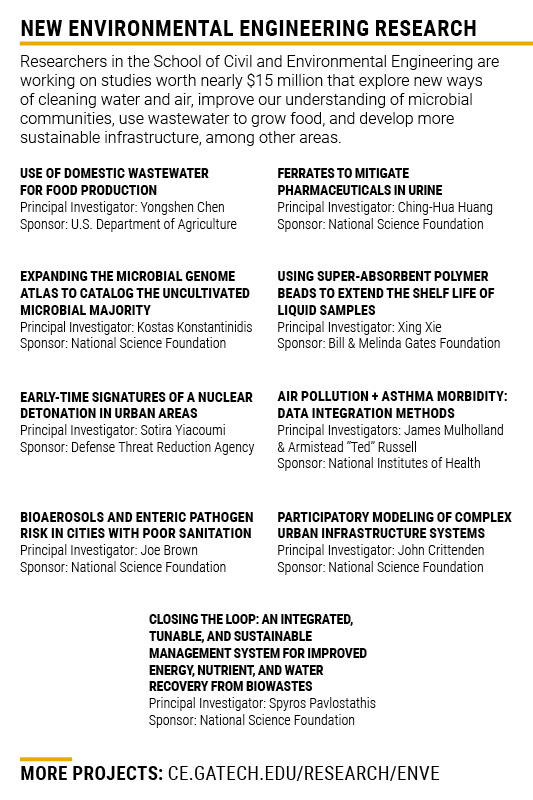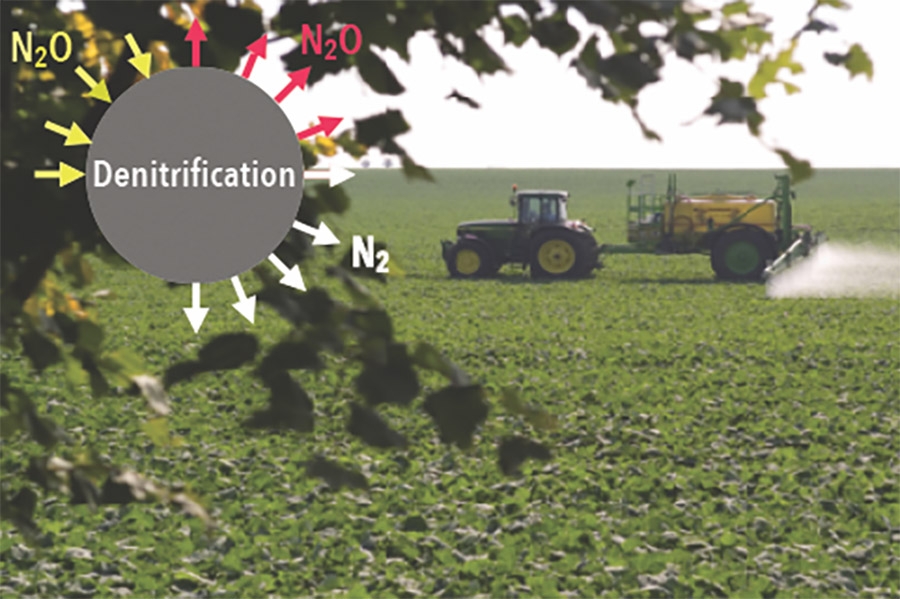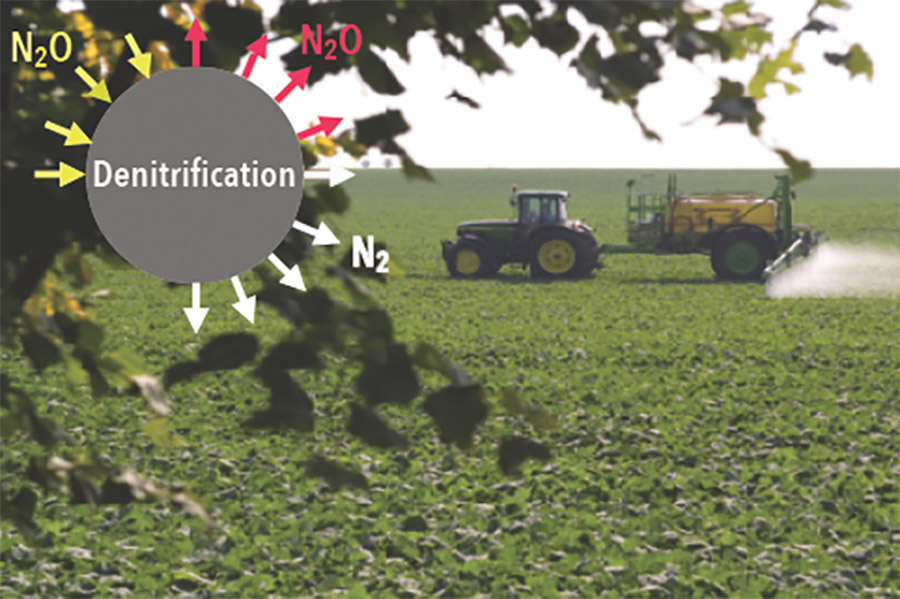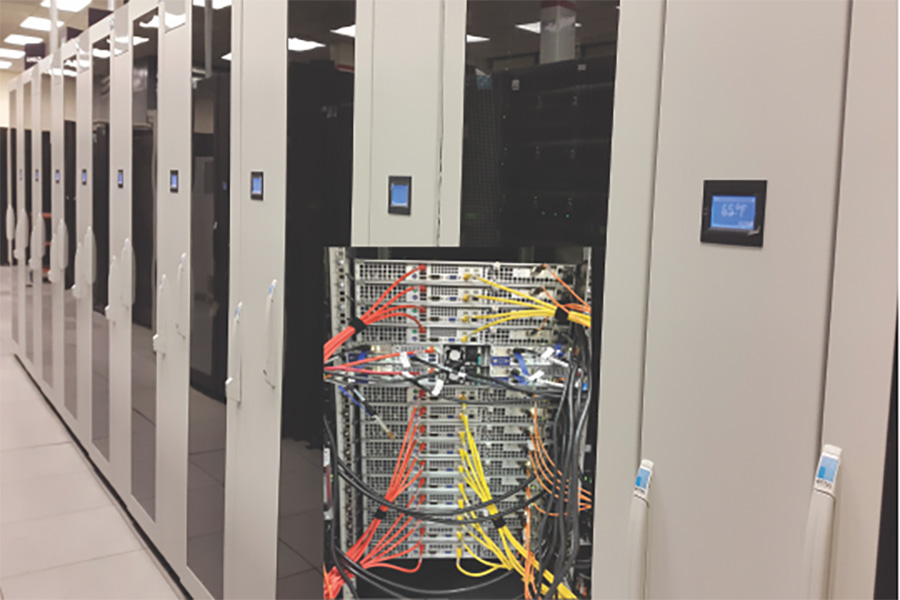Kostas Konstantinidis has received two new grants from the National Science Foundation that promise to help researchers better understand some of the tiniest organisms on the planet.
The NSF Dimensions project will study how soil microbes influence levels of nitrous oxide emissions from the soils to the atmosphere, a key greenhouse and acid-rain-causing gas, in hopes of offering new ways to manage those levels. The NSF Advances in Biological Informatics project will help researchers make sense of the mountains of new genetic data about microbes that they’ve unlocked in the last decade or so. Together, the projects are worth nearly $3 million.
Nitrogen in the soil
In the first project, a five-year study with collaborators in Illinois, Tennessee, and Puerto Rico, Konstantinidis will work to better understand the processes that lead to emissions of nitrous oxide — N2O — from soil. The study will focus on agricultural land, where nitrogen is often added to soil as fertilizer, and tropical forests. Together, these ecosystems account for the majority of nitrous oxide emissions to the atmosphere.
 |
“We want to understand when soils emit N2O and when they consume it from the atmosphere. The reason is, N2O is a very harmful gas,” said Konstantinidis, a professor in the School of Civil and Environmental Engineering. “It's warming up the planet more than CO2. In fact, if you had the same amount of N2O as CO2, the planet would have been much warmer. It also makes acid rain and unhealthy air.”
Microbes in soil can break down the nitrous oxide into harmless nitrogen, N2, which makes up most of our atmosphere anyway. But Konstantinidis said they don’t always do a good job, which leads to N2O emissions from soil. The question for researchers is why.
“If we understand what's going on — when soils emit N2O versus when they consume it — maybe we can manage that process better so we have less effect on the environment,” he said.
Konstantinidis said understanding those processes will help fill in gaps in climate and weather models that currently cannot account fully for the levels of N2O emitted from soils. It also will link what’s happening at the molecular level to what’s happening in the broader ecosystem.
“If we can figure out how to do that, we can also do it for other important gases, for example carbon dioxide or methane,” he said. “Nobody has a good idea how to do that [right now].”
Turning genomic data into knowledge
The second project expands the functionality of a webserver Konstantinidis, research scientist Luis-Miguel Rodriguez, and co-workers at Michigan State have been building for the last three years that’s, in essence, a search engine for microbial genomes.
Called the Microbial Genomes Atlas, or MiGA, it allows researchers to submit unidentified genetic sequences to see if they match with any of the more than 100,000 genomes cataloged so far. With a database of that size, searches require significant processing power. That’s where the new NSF funding will help.
“One limitation is the big data analysis,” Konstantinidis said. “We’re working on the computational challenge of how you can search this huge space of genomes in an efficient amount of time — like in a couple of minutes. If successful, the project would have obvious applications in identifying pathogens in environmental or clinical samples. For instance, many cases of disease go undiagnosed because we cannot identify the pathogen that’s responsible.”
He said as the ability to sequence microbial genomes has grown in the last decade — even for those microbes that cannot be cultivated in the lab — most scientists often have more data than they can effectively use. Plus, it’s often difficult to identify the most interesting genomes for further analysis. The expanded MiGA will help researchers sort through all of that information.
Already, the web server that houses MiGA and other related bioinformatics tools Konstantinidis’ lab has developed sees 3,000 unique users every month.
“The interest is across fields,” Konstantinidis said. “We have a lot of people doing environmental work, but we also have a lot of people from medical microbiology using these tools, including users from the CDC doing diagnostics. The functionality of these tools spans across the field of microbiology.”



